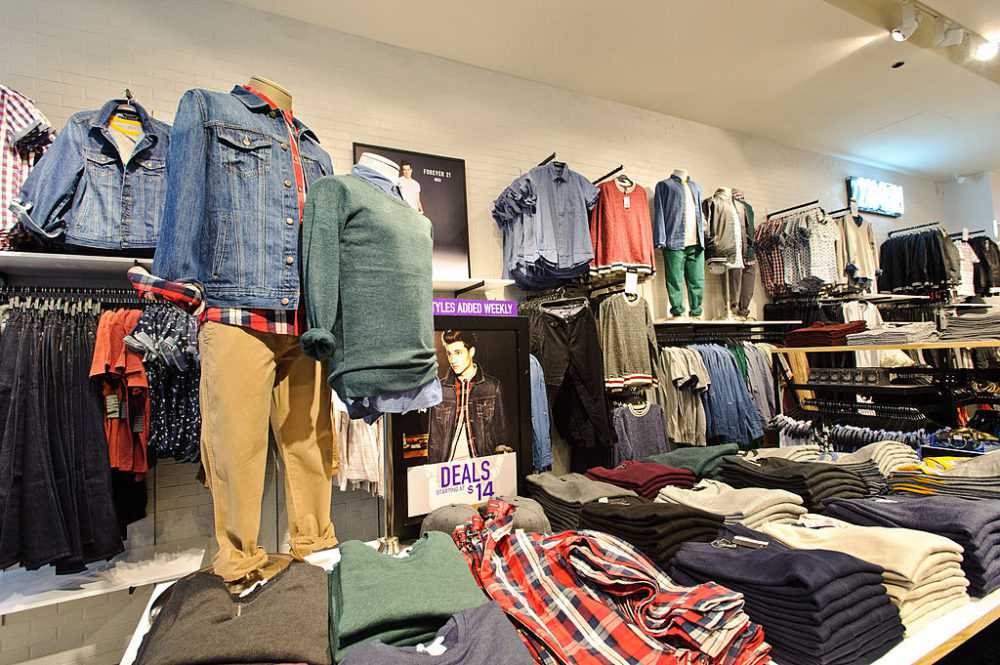The Environmental Cost Of Fashion

Image collected
Six years ago, an eight-story building collapsed in Bangladesh, killing 1,138 people working in garment factories.
Since the tragic Rana Plaza factory collapse, Fashion Revolution has become the world's largest fashion activism movement.
Over the last year, 3.5 million people engaged with Fashion Revolution’s efforts to show consumers ethical ways to fill their wardrobes and hold the world's major fashion brands accountable for the role the industry has played in accelerating climate change, says Carry Somers, founder and global operations director for the nonprofit.
The organization hosts events around the world to pressure brands and retailers to ensure their supply chain is void of human rights abuses and environmental degradation.
“We know that the further down the supply chain, the more we're likely to see environmental abuses. We know that of the human rights abuses like modern slavery and forced labor,” she says. “Exploitation thrives in hidden places.”
Fashion Revolution aims to address the environmental costs of fashion — about 60% of synthetic fabrics are made of fossil fuels and 85% of that material will end up in landfills, where it won't decay and decompose.
For example, polyester is made from fossil fuels that emit greenhouse gases and also shed microfibers that add plastic pollution in the ocean. Also, chemicals used to process leather produce textile waste that goes into the environment.
About two-thirds of our clothing comes from fossil fuel-derived synthetics and making these materials is a carbon-intensive process, she says.
The global fashion industry emits 1.7 billion tons of CO2 per year — more than the amount produced by international flights and shipping.
About 55% of brands are publishing their annual carbon footprint, but only 19.5% are disclosing their carbon emissions within the supply chain — where over half of the industry’s total emissions occur, she says.
To align with the international goal of remaining under two-degrees of warming, the fashion industry would need to cut emissions by 80% by 2050. But current predictions estimate the industry’s emissions could increase by more than 60% by 2030, she says.
Fashion Revolution releases an annual Fashion Transparency Index featuring 200 of the world’s largest fashion brands. This year’s report found only 15% of brands have a time-specific goal to reduce their use of virgin plastics.
“There are fantastic ways to get new clothes without buying new,” she says. “We can hire. We can rent. We can swap. Or we can invest in clothes which are made by artisans, which have taken time and skill to produce.”
In addition to exacerbating environmental issues through the supply chain, the cycle of fast fashion adds massive amounts of waste to the environment.
Fast fashion refers to quickly and cheaply produced items that mimic the latest runway styles. Clothing from fast-fashion retailers like Primark and Zara is sometimes so cheap, wearers discard it after a single-use.
Of the 150 billion new clothing items put on the market every year, 25% of that remains unworn, Somers says.
In North America, 10.5 million tons of clothes are sent to a landfill each year, she says. Clothing that’s sent to thrift stores or charity shops is often sent to Africa or Central America where it disrupts the local textile and tailoring economies in these areas.
“What we need to do is to care for our clothes. We need to make them last longer,” she says. “Even extending the life of our garments by an extra nine months of active use would reduce the carbon, water and waste footprint by around 20% to 30% each.”
Fashion Revolution’s index found only 38 of the 200 brands are disclosing their processing facilities where materials are printed, dyed and spun. Only 10 brands are disclosing the facilities supplying their fibers.
Two years ago, when Somers visited garment factories in Bangladesh, she saw pollution flowing out of the factory into drainage ditches that flow into a local river — home to a red-listed species of river dolphins.
But she also witnessed the human cost of the fashion industry’s supply chain practices. She saw under-age kids working barefoot on top of piles of materials containing toxic chemicals.
The organization was part of a survey of 540 garment workers in Bangladesh, India and Cambodia. The survey found 40% of workers in Bangladesh had seen a fire in their workplace.
Basic ethical standards shouldn’t cost brands much more money, she says. Labor costs account for 1% to 3% of an item’s retail price.
Fashion Revolution found the labor cost of a €29 t-shirt is 18 cents and paying workers a fair living wage would bring the cost of labor up to 45 cents, she says.
“People are still taking risks every day to make our clothes. Women are subject to violence, to abuse. Five percent of the workers we talked to had been hit,” she says. “We really have to see brands doing so much more.”
Source: https://www.wbur.org
Previous Story
- How to support the fashion industry for a...
- It is our ‘competitiveness‘ which is holding us...
- Five steps to put the RMG sector back...
- The journey to a sustainable RMG industry in...
- Bangladesh needs to diversify products: H&M
- Bangladesh in the world of global business
- 39 % RMG exporters acknowledge costs underneath their...
- Garment and textile machinery imports saw an 11%...